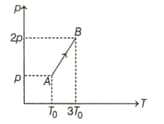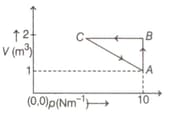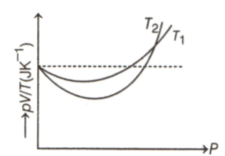D. C. Pandey Solutions for Chapter: Thermometry, Thermal Expansion and Kinetic Theory of Gases, Exercise 2: Excercise 2
D. C. Pandey Physics Solutions for Exercise - D. C. Pandey Solutions for Chapter: Thermometry, Thermal Expansion and Kinetic Theory of Gases, Exercise 2: Excercise 2
Attempt the free practice questions on Chapter 14: Thermometry, Thermal Expansion and Kinetic Theory of Gases, Exercise 2: Excercise 2 with hints and solutions to strengthen your understanding. Complete Study Pack for Engineering Entrances Objective Physics Vol 1 solutions are prepared by Experienced Embibe Experts.
Questions from D. C. Pandey Solutions for Chapter: Thermometry, Thermal Expansion and Kinetic Theory of Gases, Exercise 2: Excercise 2 with Hints & Solutions
A vertical closed cylinder is separated into two parts by a frictionless piston of mass and of negligible thickness. The piston is free to move along the length of the cylinder. The length of the cylinder above the piston is and that below the piston is such that Each part of the cylinder contains moles of an ideal gas at equal temperature . If the piston is stationary, its mass , will be given by (where, is universal gas constant and is the acceleration due to gravity)
Pressure versus temperature graph of an ideal gas is shown in the given figure. Density of gas at point is , then density of gas at point will be 
The figure shows the graph of versus for of hydrogen gas at two different temperatures, where , and represents pressure, volume and temperature respectively. Then, the value of where the curve meet on the vertical axis, is
The wavelength of the radiation emitted by a black body is and Wien's constant is . Then the temperature of the black body will be,
An ideal gas in a closed container is heated so that the final speed of the gas particles, increases by two times the initial speed. If the initial gas temperature is then What will be the final temperature of the ideal gas?
An ideal gas is taken through the cycle as shown in the figure. If the net heat supplied to the gas in the cycle is . The magnitude of work done during the process is

The maximum wavelength of radiation emitted by a star is . Then intensity of radiation for the star is (Given : Stefan's constant is , Wien's constant, )
Two black bodies and have equal surface areas and are maintained at temperatures and , respectively. What will be the ratio of the thermal energy radiated per second by to that by ?

